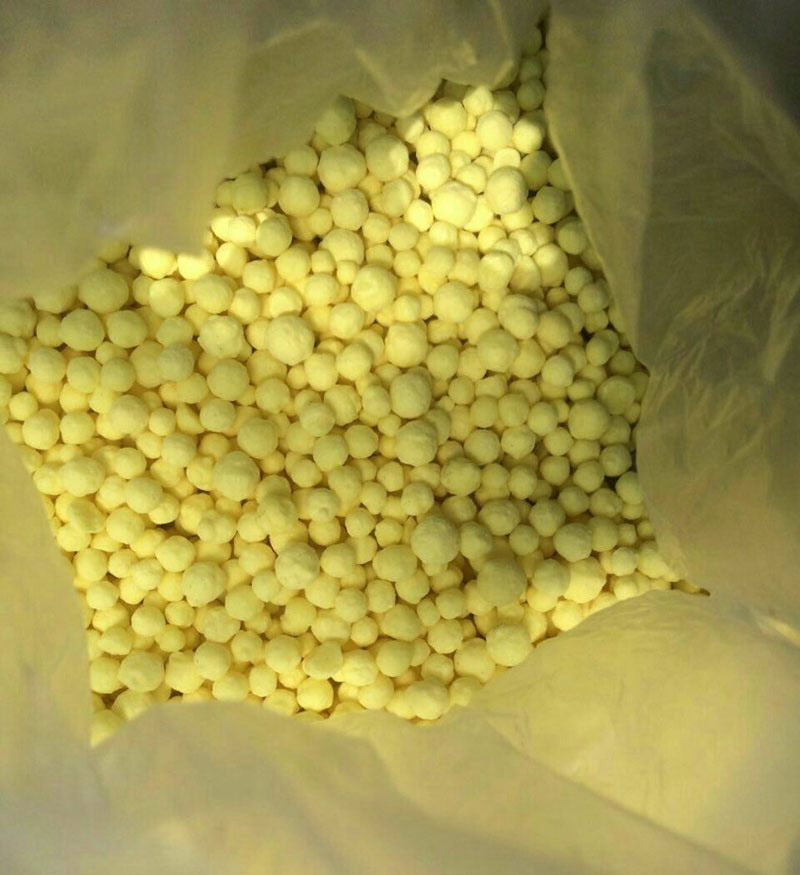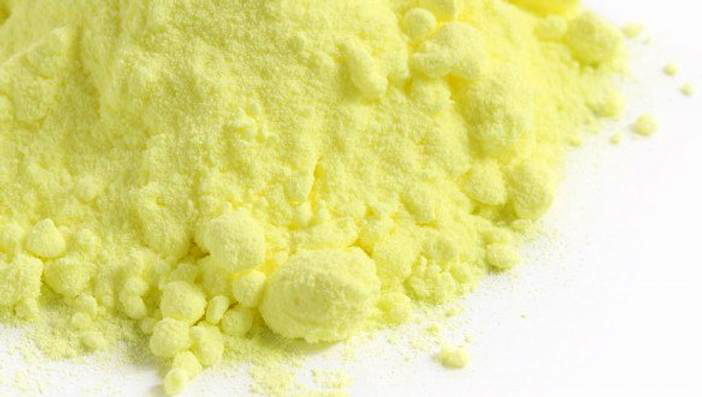Sulphur Types: Granules & Pastilles
The granular sulphur is produced as a side product from the Gas Processing in particular from the Gas Sweetening Process that removes H2S then is converted to Liquid sulphur in the Sulphur Recovery Units (SRU) and finally that liquid sulphur is processed to produce Granulated Sulphur. Granular sulfur, as the name implies, is created through the gradual buildup of successive layers of sulfur around a central core. As a result, the ultimate product size can be controlled.
Drum granulation of solid sulphur is the most common method of producing dense, spherical sulfur granules. Sulfur granulation is a size enlargement process. Small sulphur seeds (undersized granules) are repeatedly coated with a liquid sulphur spray and cooled. With repeated application of liquid sulphur, the seed increases in volume and weight. The particles are coated until they reach a diameter of 2-6 mm. As the granule is enlarged, each coating of liquid sulphur is fully and structurally bonded to the layer beneath. This creates a spherical granule which is entirely dry and completely free of voids.
In sulphur pastillation, drops of liquid sulfur are placed on a steel belt cooler in regular rows using a liquid sulphur injection machine. The liquid sulphur loses heat as it moves on the steel belt cooler and forms into uniform hemispherical shapes called pastilles. Forming sulphur pastilles is an increasingly popular method of producing solid sulfur, due to the relative ease of setup and the high quality of the final product.
Sulphur Types: Powder
Sulfur Powder is produced with various standard particle sizes ranging from -40 to -350 mesh and submicron. Processes for the production of micronized sulphur powder are dangerous and energy inefficient. Micronized sulphur powder is quite often produced by pulverizing sulphur lumps in mechanical milling equipment. Sulphur powder is widely used in agricultural insecticides and fungicide in the dust forms or in the form wettable sulfur in spray mixture along with other insecticides. Sulphur powder is also used in the manufacture of fertilizers, rubber vulcanization, medicines and explosives and in the manufacture of other chemicals. Sulphur powder has an ignition temperature of approximately 190 degrees Celsius and there is a potential for explosion when there is a dust cloud from handing sulfur. In addition, static from the particles can result in ignition. It should be stored in well-ventilated areas to reduce the risk of fire or explosion.
Sulfur is one of the chemical industry’s most important raw materials. It is used principally as the derivative in many chemical and industrial processes and is particularly important in the manufacture of phosphate fertilizers, the single largest end-use for sulfur.
Sulfur’s main commercial use is as a reactant in the production of sulfuric acid. Sulfuric acid is the industrialized world’s number one bulk chemical, required in large quantities in lead-acid batteries for automotive use. More than 90 percent of the elemental sulfur consumed in the United States is converted to sulfuric acid.
Elemental sulfur is a commonly used pesticide on many farms in the world. It is approved for 64 use on both conventional and organic crops to help control fungus and other pests. Fertilizers are the ultimate use of about 50% of the world’s sulfur production.
Sulphur powder is used in the process of manufacturing other common items such as matches, adhesives, synthetic fibers, paper products, plastics, water treatment chemicals and storage batteries.


